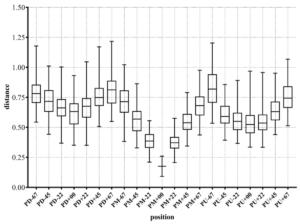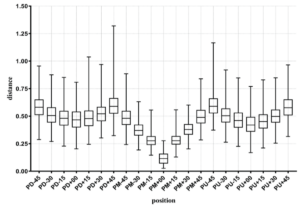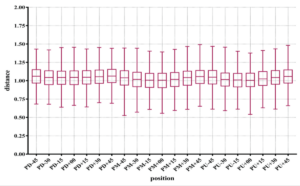A Study of Multi-Pose Effects On a Face Recognition System
Forensic Medicine – Multi-Pose Challenges in Face Recognition Systems
Forensic Medicine relies on cutting-edge technology for accurate identification and investigation. Face recognition systems play a pivotal role in forensic analysis, but their performance can be hindered by multi-pose variations in facial images. This blog explores how pose variations affect distance-based face recognition systems, based on a study investigating these challenges and their implications for forensic applications.
For the full study, visit the HTML article or download the PDF version.
Introduction
Face recognition systems are widely used in forensic medicine for identifying individuals in criminal investigations. However, pose variations, such as head tilts or angles, significantly impact their accuracy. The study reviewed here investigates how these variations influence feature distance measurements, focusing on intrapersonal and interpersonal pose variations using a FaceNet-based system and the CAS-PEAL Chinese face database.
Challenges in Multi-Pose Face Recognition
1. Pose Variation Effects
- Intrapersonal Variation: Changes in a person’s head angle or expression affect feature distances, reducing recognition accuracy.
- Interpersonal Variation: Pose variations between individuals are generally minimal but can still contribute to recognition errors.
2. Impact on Forensic Investigations
- In real-world scenarios, probe images are often taken under suboptimal conditions (e.g., poor lighting, non-frontal poses).
- The need to examine multiple “Top-N” candidates increases investigative workload and reduces efficiency.
Key Findings
Intrapersonal Distance Variations
The study demonstrated that intrapersonal pose differences, particularly yaw and pitch angles, significantly affect feature distances. Smaller yaw angles result in shorter feature distances, improving recognition accuracy, while larger angles degrade performance.
Monte Carlo Simulations for Multi-Pose Recognition
Monte Carlo simulations revealed:
- For near-profile poses (e.g., yaw angle of 67°), investigators needed to examine up to 35 candidates to achieve a 90% hit probability.
- Recognition accuracy improved for near-frontal poses (yaw angles within ±15°).
Gallery Size and Recognition Performance
The size of the gallery database substantially affects performance. Larger galleries introduce greater interpersonal variations, increasing false positives and complicating identification.
 Figure 1: Multi-pose feature distance variation for the same individual in part I of the dataset.
Figure 1: Multi-pose feature distance variation for the same individual in part I of the dataset.
 Figure 2: Multi-pose feature distance variation for the same individual in part II of the dataset.
Figure 2: Multi-pose feature distance variation for the same individual in part II of the dataset.
Forensic Applications of Multi-Pose Recognition
- Improved Investigative Accuracy
- Understanding pose effects helps optimize recognition systems for criminal investigations.
- Enhanced algorithms can prioritize high-probability candidates, reducing the workload for forensic teams.
- Efficiency in Large Databases
- Solutions like spatial normalization and pose frontalization can minimize the impact of large gallery sizes, improving search efficiency.
- Adaptation to Real-World Conditions
- Forensic medicine requires systems capable of handling images captured in uncontrolled environments. Advanced algorithms can bridge this gap.
 Figure 3: Multi-pose feature distance variation for different individuals in part II of the dataset.
Figure 3: Multi-pose feature distance variation for different individuals in part II of the dataset.
- Forensic medicine requires systems capable of handling images captured in uncontrolled environments. Advanced algorithms can bridge this gap.
Future Directions in Forensic Medicine
1. Pose-Invariant Recognition Models
Developing models that inherently account for pose variations will significantly enhance forensic applications, enabling accurate identification regardless of head angles or expressions.
2. Integration of Artificial Intelligence
AI-driven pose correction and enhancement techniques, such as geometry-preserving GANs, could improve recognition accuracy in challenging scenarios.
3. Collaborative Databases
Global collaboration to create large, diverse facial image databases can help train models for greater robustness and reliability in forensic settings.
Conclusion
Pose variations present significant challenges in face recognition systems, particularly in forensic medicine, where accuracy and efficiency are paramount. By understanding and addressing these challenges, such as through Monte Carlo simulations and pose-invariant modeling, forensic experts can improve identification outcomes.
For an in-depth analysis, explore the HTML article or review the PDF version.
